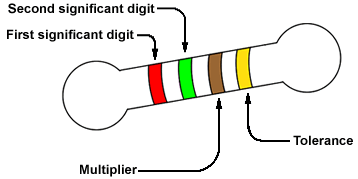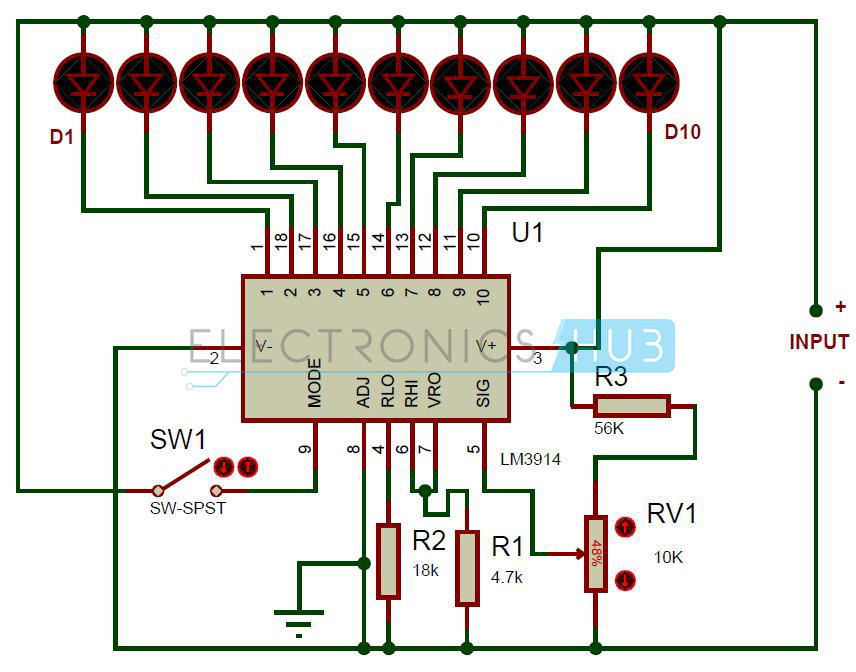This my second post on Resistor component
if you want to know what is a resistor you can got o my previous post Resistor
Now ,,,,How a resistor is manufactured???
Almost all resistors are manufactured by machine. The ceramic core is molded and pressed by machine. Individual cores are made to fit different sized resistors. The cores are then "wire wound" using another machine that wraps the resistor material around the core. The lead ends, which include both the metal wire and a cap end that is shaped like a bottle cap, are then pressed onto the core. The cores are painted with typical paint or a baked on finish.
resistor manufacturing process begins with the selection of suitable material
Materials:
there are numerous types of materials used in resistor manufacturing
some of them are
1.CARBON
2.FILMS OF CARBON,METALS,METAL OXIDES
3.WIRE-WOUNDS OF METALS
etc..;
Carbon resistors:
A carbon resistor is the most common type. This is made by wrapping a carbon track around a ceramic core. The carbon track is wound around the ceramic core by a machine or etched into the core with a laser device. Two copper metal leads are then inserted in the ends of the resistor, so the ends of the track are touching the leads. The resistor is then painted to seal the core.
The Carbon Composite Resistor is a low to medium type power resistor which has a low inductance making them ideal for high frequency applications but they can also suffer from noise and stability when hot. Carbon composite resistors are generally prefixed with a “CR” notation (eg, CR10kΩ ) and are available in E6 ( ± 20% tolerance (accuracy) ), E12 ( ± 10% tolerance) and E24 ( ± 5% tolerance) packages with power ratings from 0.125 or 1/4 of a Watt up to 5 Watts.
Carbon composite resistor types are very cheap to make and are therefore commonly used in electrical circuits. However, due to their manufacturing process carbon type resistors have very large tolerances so for more precision and high value resistances, film type resistors are used instead.
FILM TYPE RESISTORS:
The generic term “Film Resistor” consist of Metal Film, Carbon Film and Metal Oxide Film resistor types, which are generally made by depositing pure metals, such as nickel, or an oxide film, such as tin-oxide, onto an insulating ceramic rod or substrate.
The resistive value of the resistor is controlled by increasing the desired thickness of the deposited film giving them the names of either “thick-film resistors” or “thin-film resistors”. Once deposited, a laser is used to cut a high precision spiral helix groove type pattern into this film. The cutting of the film has the effect of increasing the conductive or resistive path, a bit like taking a long length of straight wire and forming it into a coil.
This method of manufacture allows for much closer tolerance resistors (1% or less) as compared to the simpler carbon composition types. The tolerance of a resistor is the difference between the preferred value (i.e, 100 ohms) and its actual manufactured value i.e, 103.6 ohms, and is expressed as a percentage, for example 5%, 10% etc, and in our example the actual tolerance is 3.6%. Film type resistors also achieve a much higher maximum ohmic value compared to other types and values in excess of 10MΩ (10 Million Ω´s) are available.
Metal Film Resistors have much better temperature stability than their carbon equivalents, lower noise and are generally better for high frequency or radio frequency applications. Metal Oxide Resistors have better high surge current capability with a much higher temperature rating than the equivalent metal film resistors.
Another type of film resistor commonly known as a Thick Film Resistor is manufactured by depositing a much thicker conductive paste of CERamic and METal, called Cermet, onto an alumina ceramic substrate. Cermet resistors have similar properties to metal film resistors and are generally used for making small surface mount chip type resistors, multi-resistor networks in one package for pcb’s and high frequency resistors. They have good temperature stability, low noise, and good voltage ratings but low surge current properties.
Metal Film Resistors are prefixed with a “MFR” notation (eg, MFR100kΩ) and a CF for Carbon Film types. Metal film resistors are available in E24 (±5% & ±2% tolerances), E96 (±1% tolerance) and E192(±0.5%, ±0.25% & ±0.1% tolerances) packages with power ratings of 0.05 (1/20th) of a Watt up to 1/2 Watt. Generally speaking Film resistors are precision low power components.
WIRE-WOUND TYPE OF RESISTORS:
Another type of resistor, called a Wirewound Resistor, is made by winding a thin metal alloy wire (Nichrome) or similar wire onto an insulating ceramic former in the form of a spiral helix similar to the film resistor above. These types of resistor are generally only available in very low ohmic high precision values (from 0.01 to 100kΩ) due to the gauge of the wire and number of turns possible on the former making them ideal for use in measuring circuits and Whetstone bridge type applications.
They are also able to handle much higher electrical currents than other resistors of the same ohmic value with power ratings in excess of 300 Watts. These high power resistors are moulded or pressed into an aluminium heat sink body with fins attached to increase their overall surface area to promote heat loss and cooling.
These special types of resistor are called “Chassis Mounted Resistors” because they are designed to be physically mounted onto heatsinks or metal plates to further dissipate the generated heat. The mounting of the resistor onto a heatsink increases their current carrying capabilities even further.
Another type of wirewound resistor is the Power Wirewound Resistor. These are high temperature, high power non-inductive resistor types generally coated with a vitreous or glass epoxy enamel for use in resistance banks or DC motor/servo control and dynamic braking applications. They can even be used as low wattage space or cabinet heaters.
The non-inductive resistance wire is wound around a ceramic or porcelain tube covered with mica to prevent the alloy wires from moving when hot. Wirewound resistors are available in a variety of resistance and power ratings with one main use of power wirewound resistor is in the electrical heating elements of an electric fire which converts the electrical current flowing through it into heat with each element dissipating up to 1000 Watts, (1kW) of energy.
Because the wire is wound into a coil inside the resistors body, it acts like an inductor causing them to have inductance as well as resistance and this affects the way the resistor behaves in AC circuits by producing a phase shift at high frequencies especially in the larger size resistors. The length of the actual resistance path in the resistor and the leads contributes inductance in series with the “apparent” DC resistance resulting in an overall impedance path of Z Ohms.
Impedance ( Z ) is the combined effect of resistance ( R ) and inductance ( X ), measured in ohms and for a series AC circuit is given as, Z 2 = R 2 + X 2.
When used in AC circuits this inductance value changes with frequency (inductive reactance,XL = 2πƒL) and therefore, the overall value of the resistor changes. Inductive reactance increases with frequency but is zero at DC (zero frequency). Then, wirewound resistors must not be designed or used in AC or amplifier type circuits where the frequency across the resistor changes. However, special non-inductive wire-wound resistors are also available.
By this manufacturing process of resistor ends
In the next we will discuss about about SMD resistors












